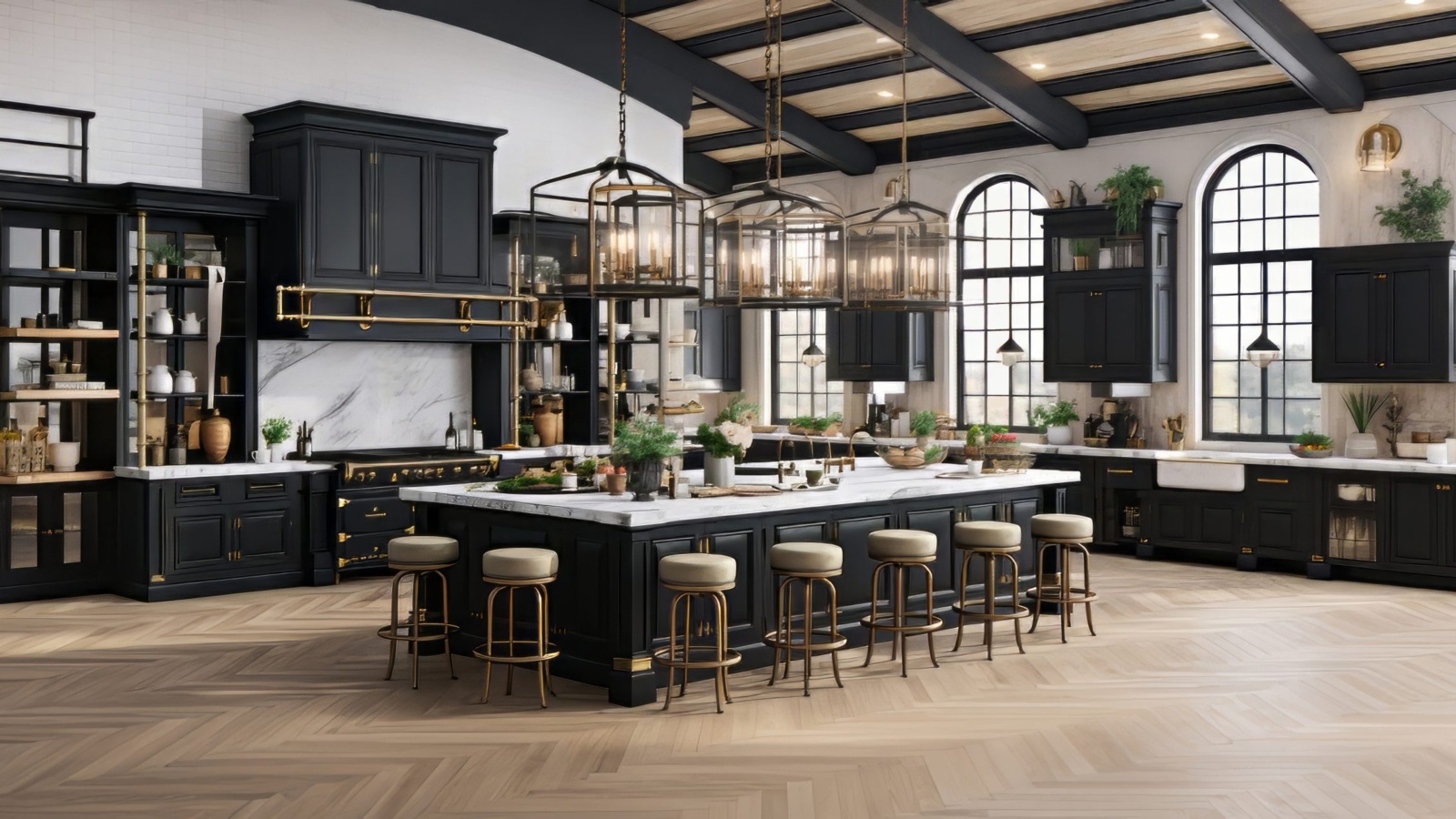Kitchens are often described as the heart of a home, and this week’s featured design exemplifies how thoughtful blending of old and new elements can transform a functional space into a vibrant, inspiring hub. Conceptualized by an emerging interior designer, this kitchen showcases a bold, inventive approach that balances contemporary innovations with classic touches, demonstrating that striking aesthetics and practical functionality can coexist seamlessly. The result is a space that feels both inviting and dynamic, reflecting a fresh perspective on modern kitchen design.
A Dialogue Between Eras
The defining feature of this kitchen is its nuanced interplay between historical charm and contemporary flair. Original architectural details—such as exposed brickwork, vintage moldings, or reclaimed wooden beams—anchor the design in tradition, providing warmth and texture that evoke a sense of history. Against this backdrop, sleek cabinetry, modern countertops, and state-of-the-art appliances introduce a clean, minimalist aesthetic, ensuring the space feels light, fresh, and highly functional. This delicate juxtaposition of old and new creates a layered, visually compelling environment where each element complements the other rather than competing for attention.
Functional Zoning and Workflow
Beyond aesthetics, the kitchen is designed with practicality at its core. Distinct zones for cooking, prep, and cleanup ensure efficient workflow for both everyday routines and entertaining. The layout strategically positions key elements—such as the stove, sink, and refrigerator—within easy reach, minimizing unnecessary steps and enhancing convenience. Storage solutions combine hidden compartments with open shelving, offering versatility while maintaining a visually clean appearance. Pull-out drawers, pantry organizers, and integrated appliance storage maximize functionality without sacrificing style, a hallmark of thoughtful design.
Materiality and Textural Contrast
A central theme in this kitchen is the strategic use of materials to create contrast and visual interest. Matte and high-gloss finishes coexist on cabinetry, while natural stone, wood, and metallic accents contribute both texture and warmth. The countertops, for instance, may pair a durable quartz surface with reclaimed wooden island panels, merging contemporary durability with rustic charm. Brass or copper hardware adds subtle sophistication, while backsplashes of patterned tiles or polished stone serve as focal points that enhance the character of the space. The careful layering of materials underscores the designer’s ability to harmonize diverse elements without creating visual clutter.
Lighting That Enhances Both Form and Function
Lighting is another critical component in the success of this design. The space utilizes layered lighting strategies that combine ambient, task, and accent illumination. Recessed ceiling fixtures provide overall brightness, while under-cabinet LED strips ensure optimal visibility for food preparation. Statement pendant lights above the island or dining area contribute sculptural interest, simultaneously drawing the eye and enhancing the room’s personality. The designer’s attention to light ensures that the kitchen feels vibrant and functional throughout the day, while highlighting key textures and design features.
Color Palette and Accents
The color palette strikes a careful balance between energetic vibrancy and enduring sophistication. Muted neutrals on walls and cabinetry provide a timeless foundation, while pops of bold color—such as a zesty green or a sun-kissed yellow on accent furniture, appliances, or decor—inject personality into the space. Accessories, from artisanal ceramics to strategically placed greenery, further enhance the lively yet cohesive aesthetic. This approach illustrates how thoughtful use of color can transform a kitchen from a purely utilitarian area into a vibrant, uplifting environment.
Incorporating Modern Technology
Despite its nod to tradition, the kitchen embraces modern technology to enhance convenience and efficiency. Integrated smart appliances, touchless faucets, and innovative storage solutions allow the space to meet contemporary expectations while remaining visually harmonious. The designer has managed to incorporate technology without undermining the charm of the classic architectural elements, proving that functionality and beauty can coexist seamlessly in modern kitchen design.
A Space for Social Connection
One of the most compelling aspects of this kitchen is its role as a social hub. The layout encourages interaction, with a central island or breakfast bar providing a casual gathering point for family or guests. Comfortable seating areas, combined with visually engaging design details, create a space that is as much about community and conversation as it is about cooking. This design demonstrates that a kitchen can be both highly functional and deeply inviting, fostering a sense of warmth and belonging.
Conclusion
This week’s kitchen exemplifies how an aspiring interior designer can reimagine a space by blending historical elements with modern innovation. The careful balance of textures, colors, and functional zones results in a kitchen that is visually striking, highly efficient, and entirely livable. It serves as a reminder that the most successful kitchen designs are those that respect the past while embracing the present—creating spaces that feel timeless, practical, and uniquely personal. By combining traditional charm with contemporary features, this kitchen achieves a dynamic, zesty aesthetic that inspires both homeowners and designers alike, proving that thoughtful design can elevate even the most everyday of spaces into something extraordinary.

